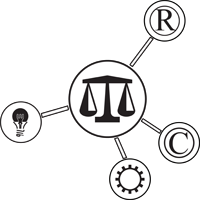International Trademark Filings Under the Madrid Protocol
The U.S. recently became a party to the Madrid Protocol whereby U.S. applicants can file international trademark applications. The Madrid Protocol system gives a trademark owner the ability to have his or her mark protected in several countries by simply filing one application with a single trademark office, in one language, with one set of fees.
An international registration produces the same effects as an application for registration of the mark made in each of the countries designated. If protection is not refused by the trademark office of the designated country within a specified period of time (up to 18 months), the mark is protected as if it had been registered with that office.
The Madrid Protocol system also simplifies the subsequent management of the mark, since it is possible to record subsequent changes (such as a change in ownership or a change in the name or address of the holder), or to renew the registration through a single procedural step with the International Bureau (IB) of the World Intellectual Property Organization (WIPO) in Geneva, Switzerland.
Unfortunately, there are some potential drawbacks to the Protocol. When filing an individual application in many foreign countries, trademark registrations are allowed with broad goods and services covering entire classes or product categories. Under the Protocol, however, applications are limited to the specific description of goods or services in the U.S. application and registration.
Filings under the Madrid Protocol are also limited in geographical scope. There are presently 57 member countries. No Central and South American countries have joined, nor have Canada and Mexico. While Europe is well represented, the Protocol may not be the best option for securing trademark protection in Europe. Presently, it is possible to register a trademark in all fifteen countries of the European Community through a single filing and examination by the Community Trademarks Office. A Protocol filing covering the same fifteen European countries would entail examination in fifteen separate jurisdictions.
In order to utilize the Madrid Protocol system, the trademark owner must (a) have a regular U.S. application on file or issued U.S. registration, and (b) be a national of, have a domicile in, or have a real and effective industrial or commercial establishment in the United States. The Madrid Protocol application is filed with the U.S. Patent and Trademark Office with a designation of an extension of the basic U.S. application/registration to other countries. If the application is granted by the International Bureau, an “international registration” is issued.
The mark and the owner of the international application must be the same as the mark and the owner of the basic U.S. application or registration. Fees must be paid to both the U.S. Patent and Trademark Office and to the International Bureau. After the application has been filed with the U.S. Patent and Trademark Office, it is examined for procedural formalities and forwarded to the International Bureau, which, after an examination of its own, will issue the international registration.
Registration by the International Bureau does not mean that the mark is automatically granted protection in the designated countries. The International Bureau forwards the registration to each country that has been designated by the applicant for trademark protection. Each country examines the application according to its local laws, publishes the mark for opposition in that country’s trademark journal, and protection is then granted on a country-by-country basis. If a designated country does not act on the application within a set period of time (maximum of 18 months), then protection of the mark in that country is automatically established. However, if the country’s trademark office refuses the application or if there is an opposition, then foreign associate counsel is needed to deal with the issues raised.
The international registration has a 10 year life span and may be renewed for additional 10 year periods. A single renewal date is applicable to all designated countries that grant it protection.
For the first five years, the international registration is completely dependent on the U.S. basic application or registration. Thus, during the first five years of the life of the international registration, if the U.S. basic application or registration is refused, withdrawn, canceled or restricted, in whole or in part, then the International Bureau will cancel the international registration. There is, however, a three-month grace period in which the trademark owner can convert the international registration into separate national applications in the countries of choice. These separate applications will be deemed to have the same filing date as the international application. After the five year period has ended, the international registration becomes independent of the basic U.S. application or registration.
It is difficult to estimate the cost to be charged by the International Bureau without having all of the facts in hand (number of classes, nature of the mark, number of countries, etc.). For example, the International Bureau may charge between $2,000.00 and $2,300.00 should eight common countries be designated. By comparison, if all countries were designated, the international fees would amount to approximately $9,100.00 to $9,300.00. These amounts, of course, are dependent on fluctuating foreign exchange rates.
